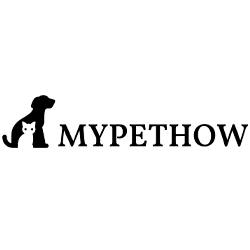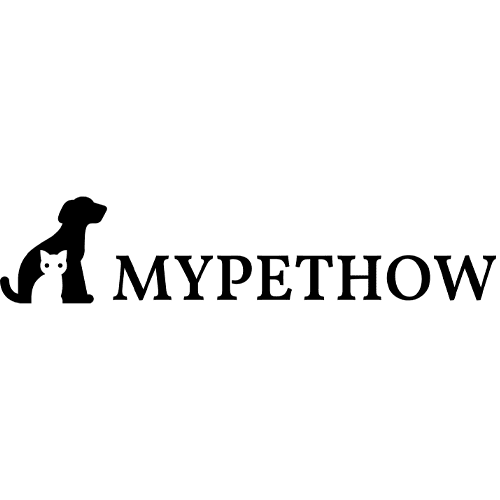Miniature pugs are a smaller version of the popular pug breed. These adorable dogs are known for their wrinkled faces, curly tails, and playful personalities. Miniature pugs typically weigh less than 10 pounds and stand around 10 inches tall.

Despite their small size, miniature pugs have big personalities. They are known for being playful, mischievous, and affectionate. They are great with children and other pets, making them an ideal family pet. However, like all dogs, miniature pugs require proper care and attention to stay healthy and happy.
Key Takeaways
- Miniature pugs are a smaller version of the pug breed, weighing less than 10 pounds and standing around 10 inches tall.
- They are known for their playful and affectionate personalities, making them great family pets.
- Proper care and attention is required to ensure the health and happiness of a miniature pug.
Miniature Pug Overview
Miniature Pugs, also known as Toy Pugs or Mini Pugs, are a smaller version of the Pug breed that typically weigh less than 10 pounds when fully grown. They are a crossbreed between a Pug and a Chihuahua or by breeding two very small pugs together, typically the runts of the litter. The first method is preferred, as serious health problems can come from breeding two runts. This does not mean that Miniature Pugs are free from health problems.
These dogs have a compact and muscular body with a short, smooth coat that can come in a range of colors, including black, fawn, and apricot. They have a wrinkled face, a curled tail, and a playful, affectionate personality that makes them great family pets.
Miniature Pugs are known for their loyalty and love for their owners. They are intelligent and easy to train, making them a great choice for first-time dog owners. They are also good with children and other pets, making them a great addition to any family.
However, like all breeds, Miniature Pugs have their own set of health issues. They are prone to obesity, dental problems, and respiratory issues due to their short snouts. Regular exercise and a balanced diet can help prevent these issues.
History of Miniature Pugs
Miniature Pugs, also known as Toy Pugs or Micro-Mini Pugs, are small-sized Pugs that result from a cross between a Chihuahua and a Pug. This crossbreeding results in a dog that resembles a Pug but with a slightly longer snout.
The history of Miniature Pugs is relatively recent, with the breed believed to have been created in the United States in the 1980s by crossing a Pug with a smaller breed such as a Chihuahua or a Pomeranian. The goal was to create a smaller version of the Pug that would be more suitable for apartment living.
While Miniature Pugs are not recognized as an official breed by major kennel clubs, they have gained popularity as a designer dog. However, some controversy surrounds the breeding of Miniature Pugs, with concerns about potential health issues resulting from the crossbreeding.
Despite the controversy, Miniature Pugs continue to be sought after by those who are looking for a smaller version of the beloved Pug breed. They are known for their playful and affectionate personalities, making them great companions for families and individuals alike.
Physical Characteristics of Miniature Pugs
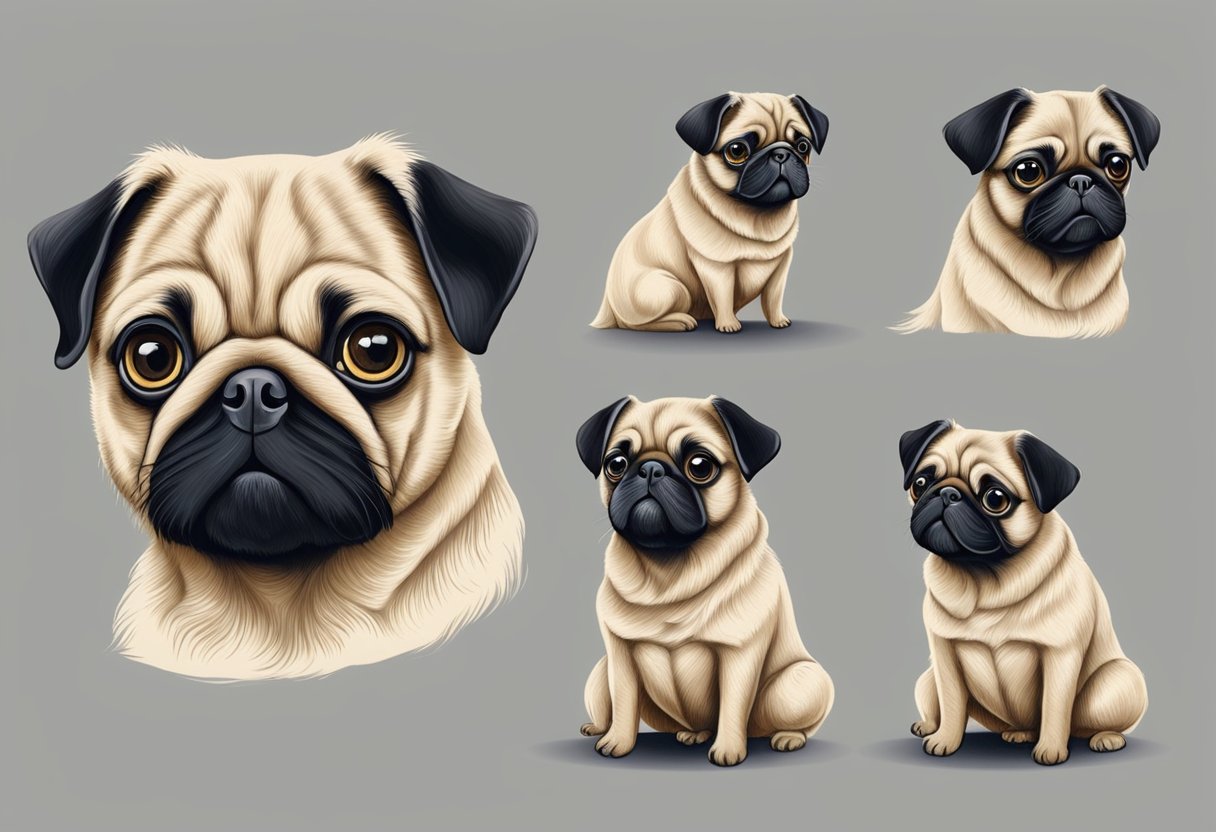
Miniature Pugs are small-sized dogs that have a distinct appearance and unique physical characteristics. Here are some of the most notable physical features of miniature pugs:
- Size: Miniature Pugs are generally smaller than the standard Pug breed. They can weigh anywhere between 3 to 14 pounds and stand around 6 to 10 inches tall at the shoulder.
- Coat: Miniature Pugs have a short, smooth, and glossy coat that comes in a variety of colors, including black, fawn, apricot, silver, and brindle. They have a wrinkled forehead, short snout, and large, expressive eyes.
- Body: Miniature Pugs have a compact, muscular body with a broad chest, short legs, and a curled tail. They have a square-shaped head and a slightly longer snout than the standard Pug breed.
- Temperament: Miniature Pugs are known for their friendly, affectionate, and playful nature. They are social dogs that love to be around people and other pets. They are also intelligent, trainable, and eager to please their owners.
- Health: Miniature Pugs are generally healthy dogs, but they may be prone to certain health issues, such as respiratory problems, eye problems, hip dysplasia, and skin allergies. It is important to provide them with proper nutrition, exercise, and regular veterinary care to keep them healthy and happy.
Miniature Pug Temperament
The Miniature Pug is a friendly and affectionate breed that craves human attention. They are known for their playful and mischievous nature, making them a great addition to any family. Here are some key characteristics of their temperament:
- Loving: Miniature Pugs are known for their love of humans. They enjoy being around people and will often seek out attention from their owners.
- Playful: These dogs have a playful and energetic nature. They love to play and will often initiate games with their owners.
- Stubborn: Miniature Pugs can be stubborn at times, which can make training a challenge. However, with patience and consistency, they can be trained to follow commands.
- Affectionate: These dogs are very affectionate and enjoy cuddling with their owners. They are often referred to as “lap dogs” because of their desire to be close to their humans.
- Sociable: Miniature Pugs are social animals and enjoy being around other dogs. They are generally good with children, although supervision is always recommended.
Overall, the Miniature Pug has a friendly and outgoing temperament that makes them a great companion for families and individuals alike. They are loyal, loving, and playful, and will bring joy to any household.
Health Concerns for Miniature Pugs
Miniature pugs are a cross between pugs and Chihuahuas or by breeding two very small pugs together, typically the runts of the litter. While they are adorable and make great companions, they are prone to certain health concerns due to their small size and breeding.
Common Health Issues
Like their parent breeds, miniature pugs are at risk for certain health issues. Some of the most common health concerns for miniature pugs include:
- Brachycephalic Syndrome: Miniature pugs have a brachycephalic skull, which means they have a shortened snout and a compressed upper respiratory system. This can lead to breathing difficulties, especially in hot weather or during exercise.
- Eye Problems: Miniature pugs are prone to eye problems such as corneal ulcers, cataracts, and dry eye. Regular check-ups with a veterinarian can help catch these issues early and prevent them from becoming more serious.
- Dental Issues: Miniature pugs have small mouths and crowded teeth, which can lead to dental problems such as gum disease and tooth decay. Regular dental cleanings and at-home dental care can help prevent these issues.
Life Expectancy
The average lifespan of a miniature pug is around 12-15 years. However, like all dogs, their lifespan can be influenced by genetics, diet, exercise, and overall health. Regular check-ups with a veterinarian can help catch health issues early and ensure that your miniature pug lives a long and healthy life.
It’s important to keep in mind that while miniature pugs are adorable and make great companions, they do require special care and attention due to their small size and health concerns. With proper care and attention, your miniature pug can live a happy and healthy life by your side.
Caring for a Miniature Pug
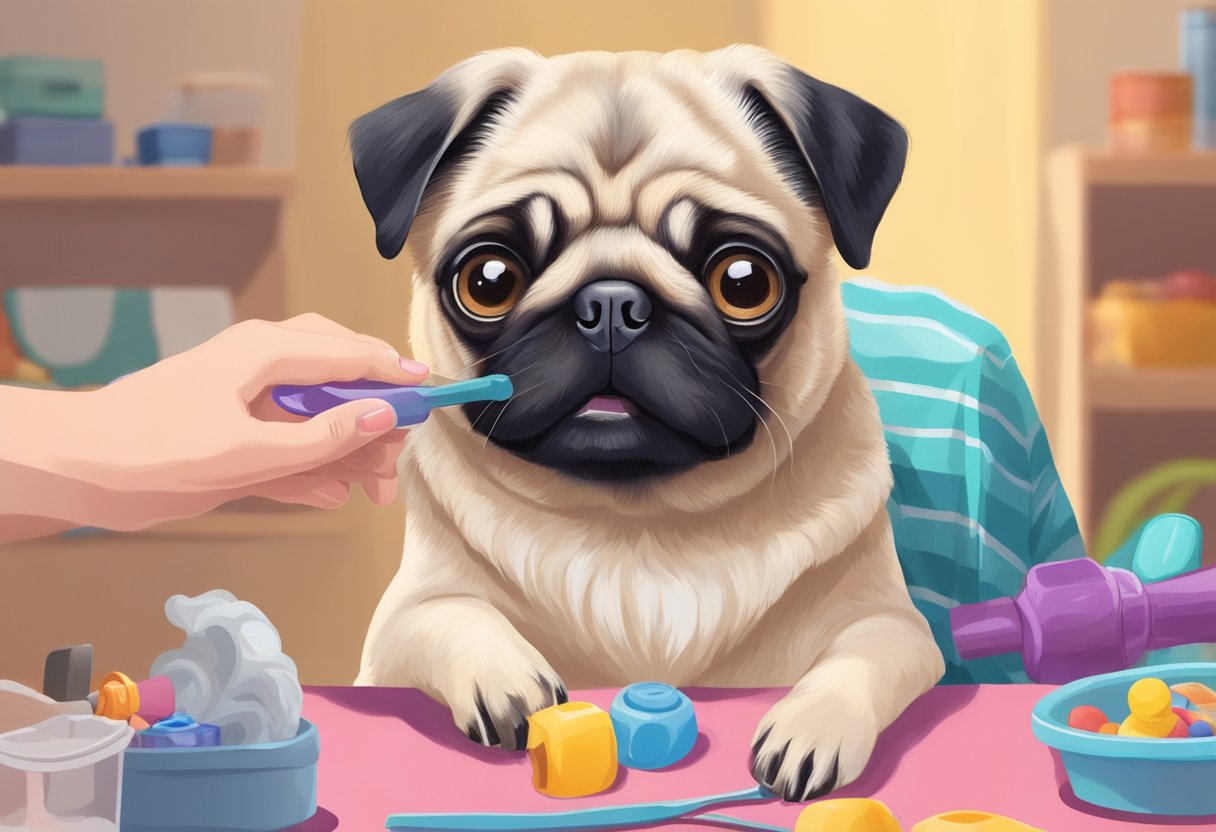
Here are some essential tips for caring for a Miniature Pug.
Dietary Needs
Miniature Pugs have a small body size, which means they require a specific diet to maintain their weight and overall health. It is essential to feed them high-quality food that contains all the necessary nutrients, including protein, carbohydrates, fats, vitamins, and minerals.
It is recommended to feed them small meals throughout the day instead of one large meal to avoid bloating and other digestive problems. Additionally, avoid giving them table scraps and human food, as it can cause obesity and other health issues.
Exercise Requirements
Miniature Pugs are energetic dogs that require regular exercise to stay healthy and happy. However, their small size means they do not need as much exercise as larger breeds. A daily walk around the block or a short play session in the backyard is enough to keep them active and healthy.
It is essential to monitor their activity level and avoid over-exercising them, as it can cause breathing problems and other health issues. Additionally, avoid exercising them in extreme temperatures, as they are prone to heatstroke and other heat-related illnesses.
Grooming Tips
Miniature Pugs have a short, smooth coat that requires minimal grooming. However, they do shed moderately, so it is essential to brush their coat regularly to remove loose hair and prevent matting.
It is also crucial to clean their ears and teeth regularly to prevent infections and dental problems. Additionally, trim their nails regularly to avoid overgrowth and discomfort.
Training a Miniature Pug
Training a miniature pug is similar to training any other breed of dog. However, there are some specific things to keep in mind when training a pug. Here are some tips to help you train your miniature pug:
Start Early
Training your miniature pug should start as soon as you bring them home. You should introduce them to the behavior you expect from them, but don’t expect them to be perfectly behaved right away. It takes time and patience to train a dog.
Use Positive Reinforcement
Positive reinforcement is the best way to train your miniature pug. Reward them with treats, toys, and praise when they do something good. This will encourage them to repeat the behavior in the future.
Be Patient
Training a miniature pug can take time, so be patient. Don’t get frustrated or angry if they don’t learn something right away. Keep working with them and they will eventually get it.
Teach Basic Commands
Teaching your miniature pug basic commands like sit, stay, come, and heel is important. These commands will help keep your dog safe and well-behaved. Use treats and praise to reward your dog when they follow your commands.
Socialize Your Pug
Socializing your miniature pug is important to help them become well-adjusted and friendly dogs. Introduce them to different people, animals, and environments so they can learn to be comfortable in a variety of situations.
Use a Crate
Using a crate can help with house training and keep your miniature pug safe when you’re not home. Make sure the crate is the right size for your dog and that it’s comfortable with blankets and toys.
Miniature Pug Breeding

Miniature Pugs are a popular type of small dog that is bred by crossing a Pug with a smaller breed, such as a Chihuahua. Breeders may also selectively breed smaller Pugs to produce miniature versions of the breed. However, it is important to note that these smaller dogs may be more prone to health issues, including respiratory problems, due to their smaller size and shorter snouts.
When breeding Miniature Pugs, it is important to choose healthy parent dogs with good temperaments. Breeders should also be aware of potential health issues that may arise in the breeding process, such as hip dysplasia and eye problems.
It is recommended that breeders obtain health clearances for their parent dogs before breeding to ensure that any potential health issues are identified and addressed. This can help to reduce the risk of passing on genetic health problems to the puppies.
Adopting a Miniature Pug
Adopting a Miniature Pug can be a great way to add a new furry member to your family. These small and adorable dogs are known for their playful and affectionate personalities, making them a popular choice for many pet owners. Here are a few things to consider before adopting a Miniature Pug.
Characteristics of Miniature Pugs
Miniature Pugs are a smaller version of the traditional Pug breed, weighing between 6-10 pounds and standing 6-10 inches tall at the shoulder. They are known for their wrinkled faces, big eyes, and curly tails. Miniature Pugs have a short, smooth coat that comes in a variety of colors, including black, fawn, silver, and apricot.
Adopting a Miniature Pug
If you’re interested in adopting a Miniature Pug, there are a few things you should consider. Firstly, you should research reputable breeders or adoption agencies that specialize in Miniature Pugs. It’s important to find a breeder or agency that prioritizes the health and well-being of their dogs.
Secondly, you should prepare your home for your new furry friend. Miniature Pugs are small and can be prone to health issues, so it’s important to create a safe and comfortable environment for them. This may include purchasing a soft bed, food and water bowls, and toys.
Lastly, you should be prepared to give your Miniature Pug plenty of love and attention. These dogs thrive on human companionship and need daily exercise and playtime. Miniature Pugs are also known for their stubborn streak, so it’s important to be patient and consistent with their training.
Conclusion
Adopting a Miniature Pug can be a rewarding experience for pet owners who are willing to provide love, care, and attention to their furry friend. By researching reputable breeders or adoption agencies, preparing your home, and being patient with their training, you can give your Miniature Pug a happy and healthy life.
Conclusion
In conclusion, miniature pugs are a popular breed among dog lovers due to their friendly and loving nature. However, it is important to be aware of the potential health concerns that may arise from breeding practices that prioritize size over health.
According to Pugs Info, the price of a miniature pug can range from $300 to $4,000 depending on various quality factors and location. It is recommended to do due diligence and proper research before purchasing a miniature pug to ensure that it is from a reputable breeder that prioritizes the health and well-being of their dogs.
Teacup pugs, which are smaller than miniature pugs, are often created through unethical breeding practices and can result in potential health issues and suffering. It is recommended to instead seek out a reputable breeder who prioritizes the health and well-being of their dogs.
When it comes to grooming, miniature pugs require regular brushing and bathing to maintain their coat’s health and cleanliness. They are also prone to dental issues and should have their teeth brushed regularly.
Overall, miniature pugs can make great companions for those who are willing to provide them with proper care and attention. However, potential owners should be aware of the potential health concerns and do their research before making a purchase.
Frequently Asked Questions
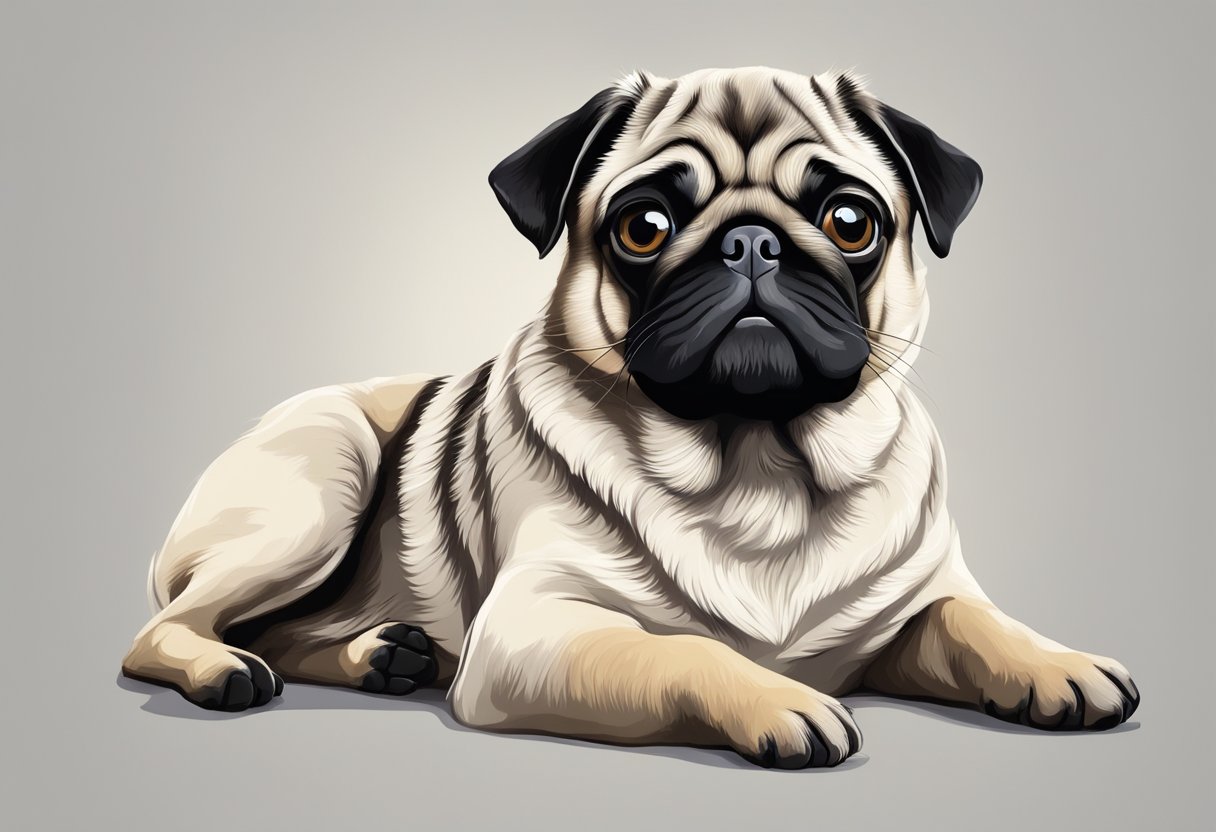
What is the smallest breed of dog pug?
The smallest breed of pug is the teacup pug. These tiny dogs are bred to be even smaller than the already small pug breed. However, it is important to note that teacup pugs are not recognized by any major breed registry, and there is controversy surrounding their breeding and health.
How long do miniature pugs live?
Miniature pugs, like their larger counterparts, typically live for 12-15 years. However, their lifespan can be affected by various factors such as diet, exercise, and genetics.
Are teacup pugs real?
Teacup pugs are not a recognized breed by any major breed registry. They are often bred by unscrupulous breeders who prioritize size over the health and well-being of the dogs. As a result, teacup pugs may be prone to health problems and have a shorter lifespan than standard-sized pugs.
Mini Pug vs pug: What’s the difference?
There is no official breed called “mini pug.” It is possible that this term is used to describe pugs that are smaller than average, but not necessarily teacup-sized. However, it is important to note that the pug breed standard calls for a weight range of 14-18 pounds, so any pug that falls within this range can be considered a standard pug.
Are teacup pugs healthy?
Teacup pugs may be prone to a variety of health problems due to their small size and poor breeding practices. These health problems can include respiratory issues, dental problems, and joint issues. Potential owners should be aware of the risks associated with teacup pugs and should only consider adopting from reputable breeders who prioritize the health and well-being of their dogs.
Where can I find miniature pug breeders?
It is important to note that there is no official breed called “miniature pug.” However, if you are interested in adopting a pug that is smaller than average, it is important to do your research and only consider reputable breeders who prioritize the health and well-being of their dogs. You can search for breeders through online directories or by contacting local breed clubs.







































